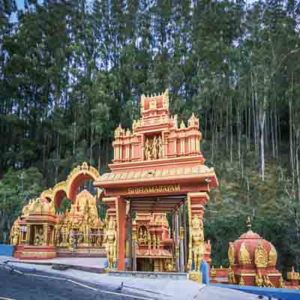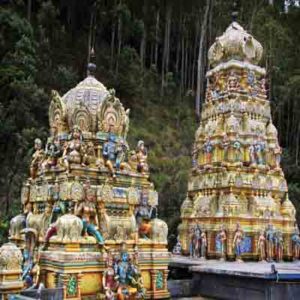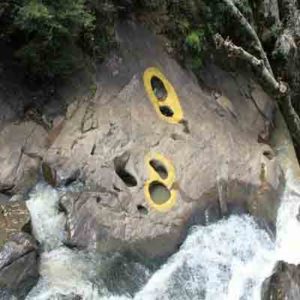


seetha-amman-kovil
seetha-amman-kovil-nuwara-eliya
seetha-amman-temple
Nuwara Eliya, Sri Lanka’s scenic hill station renowned for its good quality tea, has seen a increasing traffic of tourists to what tourist brochures call “the world’s only Sita temple.” The lately built complex, modeled on the modern southern Indian temple, is laid next to a clear stream in idyllic landscape. Another new temple is adjacent to it devoted to Hanuman, the monkey-god, who was instrumental in saving Sita from Lanka according to mythology. In latest years, the location and historicity of the temples located in the heartland of the plantation has provided rise to a debate that is taking on some divisive overtones in this island nation already torn apart by ethnic strife.
A couple of years ago, the Seetha Amman Temple Trust decided to build a Sita temple at a spot that was believed to be the exact place where the demon-king Ravana held Sita captive in the epic Lanka, Ramayana. Myth has it that Sita, King Rama’s wife, has been jailed in the region’s Ashoka forests. There is a rock opposite the bank, which is believe to be where Sita sat and meditated. It is clear from the forests of Ashoka that Sita came to this particular place when she was taken to Ceylon, at that time.
It is also believed that there is a particular point in this stream, where the water has no taste at all. It is a belief that this is where Sita placed her curses. Villagers are of the view that no one can drink the water from this particular spot.
The many worshipped sites in Sri Lanka as in India are connected with legends, beliefs and myths. These actually give such places a unique charm. Indeed, many historians of ancient India and Ceylon believe that the Ramayana of Lanka is no more southern than the Vindhyas.
Sri Lanka has a strong connection to the Ramayana an epic tale of the days gone by and connected to story of Sita and Ravana.


